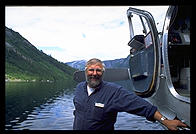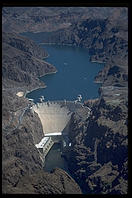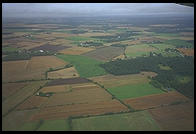
Flying
by Philip Greenspun
Site Home : Flying

|
Flyingby Philip Greenspun
Site Home : Flying |

 I like to look at the Earth and Nature from different perspectives.
Flying in a light plane 2000 or 3000 feet above the ground is a totally
different experience from being in a commercial jet where the pilots
shoot straight up into Class A airspace (18,000 feet and above) as
quickly as possible. Once I learn enough to get safely from Point A to
Point B, I plan to take a lot of aerial photos.
I like to look at the Earth and Nature from different perspectives.
Flying in a light plane 2000 or 3000 feet above the ground is a totally
different experience from being in a commercial jet where the pilots
shoot straight up into Class A airspace (18,000 feet and above) as
quickly as possible. Once I learn enough to get safely from Point A to
Point B, I plan to take a lot of aerial photos.
Flying is also fun and challenging. You have to think and act in three dimensions. You have the freedom to move to a lot of new spots on the globe. You learn to examine and appreciate scenery and natural phenomena that you'd never be able or wouldn't bother to see from the ground. Charles Lindbergh put it best: "Science, freedom, beauty, adventure."
Sadly Lindbergh was, in addition to being a great aviator, a supporter of the Nazis. In October 1938 he accepted the Service Cross of the German Eagle from Hermann Goering. On September 11, 1941, Lindbergh noted in a speech that "[The Jews'] greatest danger to this country lies in their large ownership and influence in our motion pictures, our press, our radio and our government."
Even if the end goal is soaring, you might want to try this some time. I think it's the ultimate flying experience you can get as a civilian. I didn't try it (still saving the money... who knows maybe in a couple years I can afford it) but Ken Thompson did (a couple years ago, with another company it seems): see his story.
-- Petru Paler, January 5, 2002
Happy to hear of your new interest, Phil. I have flown for the fun of it almost as long as I have taken pictures for the same reason. Combining the two can be a real treat, and I almost always take a camera with me when flying to some exotic place 50 miles away... Funny how using an airplane to get there makes it move up the exotic scale... :)A note of caution -- even high timers like to take somebody along (pilot or non pilot) to yell if something goes wrong while taking pictures. As my flight instructor from 22 years ago told me -- the pilots primary duty is to "fly the airplane". Everything else is a lower priority.
A really cool thing you can do, after you solo and begin the cross-country phase of your training, would be to take pictures of every airport you land at. Conditions permitting (gusty crosswinds probably won't permit) a snap through the windscreen on final approach, and once on the ground, a picture of the tower/terminal/hangars/line shack/whatever would make great keepsakes for you. Have the person who signs your logbook also take a snap of you by the airplane, possibly with some local feature in the background. I have pictures in my archives of once famous aiports I've landed at that aren't there anymore.
Definitely have handy a decent point&shoot loaded with a fresh roll of NPH to give to somebody who can take reasonable pix during and after your first solo. (Which will probably come when you don't expect it.)
Other tips: One or even two UV filters (never without -- Plexiglass passes all UV, and there is a lot once you get above the haze layer!), don't touch the camera to the windows (vibration), fill flash or the cabin will be way dark (it's always bright upstairs), and a wide to normal zoom (24-50 or somesuch).
A word about shooting through the propeller arc -- a prop at 2400 rpm will cover 360 degrees in 1/40 second, thus faster exposures will show one of the blades as an arc: 1/125=120 deg, 1/250=60 deg, 1/500=30 deg -- wait! You're an engineer too. You can do the math!
Also, consider the weight of the camera -- a 2lb projectile can be dangerous during turbulence (not to mention a medium format camera with a big 50mm lens!) Come up with a secure place to stash the camera, or a means of tying it down when not in use. Loose, it's a serious liability and in bumpy air, you won't have time to grab for it as it floats toward your head at high speed! I speak from experience and have the lump on my head to prove it! (Nikon F2-MD, Tokina 2.8/28-80. Ouch.)
And if you ever get the idea to open the window of a Cessna, just make sure the camera strap is secure and around your neck or shoulder...
I imagine though, that most of the precious time you are flying, your instructor will want you to concentrate on the PRIMARY task: Flying the airplane. And rightly so.
A final word. Airshows.
Happy Landings and looking forward to your photo.net Flying Presentation.
Image: Propeller.jpg
-- Joe Shupienis, January 7, 2002
Seattle Space Needle
After you finish your instrument rating, you may find your VFR skills have deteriorated because the instrument flying gets you accustomed to being led through the system to the end of the runway. (This happens to a lot of folks, often during the first few forays into an uncontrolled field.) If you have enough hours, you might consider adding the commercial rating. It's functionally useless -- you're severely limited on things you can do "for hire" -- but it does present an opportunity for working towards tighter tolerances and becoming smoother in your control.Another fairly "useless," but amazingly fun thing is the seaplane (technically: Airplane Single-Engine Sea) add-on rating. You can do this in a long weekend, weather permitting, and it will do wonders for your soft-field technique. It will be the only time you'll get 20-30 landings an hour and not seriously bend anything ;-)
I would be curious on comments on the King test preparation. I thought their subject videos (e.g., Stalls and Spins) and the practical test prep were very well done. The Instrument practical prep was done with J.C. Boylles, a DPE and master CFI, and walked you through the entire test from planning to maneuvers.
Jim Carson http://cleanliving.com/flying/
-- Jim Carson, May 2, 2002